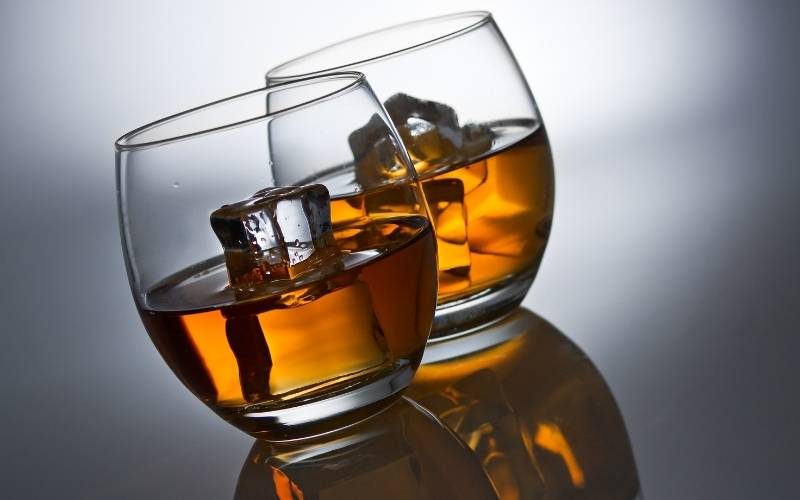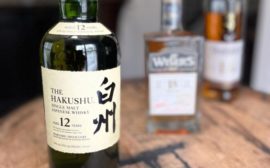One of the most controversial topics in whiskey is the use of ice in whiskey to chill it. Whiskey snobs do not waste any time telling you that you should not add ice to your whiskey because it “loses its mojo”, leaving you with only a fraction of what could have been a great experience. While there is some truth in that, there are several reasons why you should not always follow this rule.
A few things to consider when you think about using ice in whiskey
Palate Maturity
Tasting whiskey is a journey. Adding ice to whiskey might help aficionados transition to a new category by toning down some of the flavors that require adjustment in your palate. For example, peat and smoke are some of the most disliked features in Scotch Whisky for bourbon drinkers. Adding ice, in some cases, will constrain these flavors and make this whisky more balanced. The same situation can happen to a Scotch drinker trying to transition to bourbon, which can have a sharp corn flavor and feel overly sweet.
Climate and culture play a vital role
Diluting the whiskey with ice will not give you the rainbow of flavors but will allow you to enjoy a more refreshing version of the whiskey, a key factor for countries situated near the equator or with hot and humid summers. Countries like Colombia, Brasil, and Japan are clear examples.
Personal Preference
You tried the whiskey neat and did not like it. You tried it again with a few drops of water and improved. Finally, you added ice and Bingo! It’s your whiskey. Enjoy it the way you want it.
A little bit of history on ice in whiskey
Ice in The United States
In the early nineteenth century, ice was a luxury in the United States limited to the wealthy, especially in the southern states.
In 1806, Frederic Tudor pioneered the ice trade and became one of America’s first millionaires. His strategy was to cut ice from Massachusetts lakes and ponds and distribute it in blocks to tropical countries. Initially, Frederic’s customers would use the ice to preserve food and medicine, but he later targeted cafes and wealthy households so they could serve chilled drinks.
It is hard to imagine the most famous of all bourbon cocktails, the Mint Julep, without ice. The signature cocktail of the Kentucky Derby needs a decent amount of crushed quality ice to take off some of the edge from the bourbon.
Thanks to Frederic’s business, the cocktail/bartending business flourished in the nineteenth century, phasing out by 1864 with the invention of artificial refrigeration.
Every year, Woodford Reserve Distillery brings back the extravagant lifestyle of the 1800s at Churchill Downs in Louisville, Kentucky, selling a few Mint Julep cocktails with specific themes for only $1,000 each. A real treat for the wealthy.
Ice in Japan
In the era of military leaders known as Shoguns (1192 – 1868) ice was a gift to powerful people, reserved for the elite, and a symbol of power.
In Japan, the culture of ice remains strong. The ice ball is the symbol of Japanese bartending, and its purpose is to enhance the whiskey by allowing slow dilution and enjoyment. Clear ice (without air bubbles) made from clear water is a sign of hospitality in Japan.
Takayuki Suzuki is one of the most renowned bartenders in the world in charge of The Society bar at Park Hotel in Tokyo. He is famous for making ice spheres by hand, using an ice pick from a block of ice. He places the ice ball on the glass and prepares cocktails according to the client’s mood and the seasons.
A quote from Mr. Suzuki:
“The ice ball is a stone on a riverbank that has been turned by the water, so the ice ball talks about time, its shape is representative of time. It’s not technique or design; it is a philosophy of Japanese identity.”
The Highball
Highballs are drinks made with carbonated mixers, water, or juices and served in tall glasses with ice. Examples include Jack and Ginger, Scotch and soda, among others.
It is possible that the cocktail name is derived from the English/Irish term “ball”, being a common term for a glass of whiskey, and “high” for being served in a high glass.
The highball is the most common way to enjoy whisky in Japan. A drink so simple, light, and refreshing that customers can order two or three of these while waiting for their meals and still have room for food. The culture of whisky and Izakayas is so strong nowadays that tourists flock to districts like Omoide Yokocho and Golden Gai in the Shinjuku district of Tokyo to get the Japanese Whisky experience.
Suntory gets credit for creating the Suntory 12-year-old blend in 1937 with soft floral aromas (ideal for highballs) referred to by customers as Kakubin, meaning “square bottle”. Variations of the highball like mizuwari (cut with water) and sodawari (with sparkling water) are also very popular.
Suntory is also responsible for the resurrection of whisky in the early 2000s when drinking whisky was seen as old-fashioned and not hip enough for the young generation. The company created a brilliant marketing campaign, changed the composition of its highball, and hired celebrities like Koyuki from the movie The Last Samurai. The result had Kakubin highballs winning the appreciation not only of young men but also young women, who had never enjoyed whisky in the form of a highball (1/4 Kakubin Whisky and 3/4 soda or sparkling water) before.
Click here to read more about the evolution of Japanese Whisky.
A few options to try in the form of a highball include Hakushu Non-Age Statement, Toki, Hibiki Harmony, and Kakubin. Also, Scotch blends with light fruity notes make great highballs. Try a highball with Buchanan’s 12-year-old for its refreshing citrus notes.
Check out this video for more information on the highball.
A few helpful tips on using ice in whiskey
- Older whiskies will develop highly complex flavors that exist neither in the barrel nor in the spirit but emerge through a slow and uninterrupted marriage between the barrel and spirit. Adding ice to an older whisky will mask these highly complex flavors and nuances.
- On the contrary, adding ice to a rough young whiskey can be the last resort to fix a whiskey you did not like initially neat. This method might not always work, but it’s a legitimate option if you want to keep the whiskey.
Chilling Options
When it comes to chilling your whiskey, there are plenty of options that will match your style and the way you enjoy the water of life. These options will vary mainly in terms of dilution and drop in temperature.
- Whiskey Stones
- Dilution: Minimal.
- Temperature: Moderate.
- Enjoy most of the flavor from the whiskey without renouncing the chilling and refreshing sensation. The downside of this option is the risk of chipping your front teeth with stones or metal balls.
- Large Ice Cube
- Dilution: Slow.
- Temperature: Noticeable drop in the first five minutes with steady decline until the temperature remains constant.
- Slow dilution of the whiskey allows for sensing most of the core flavors while enjoying a refreshing whiskey. Probably the best of both worlds.
- Small Ice Cubes
- Dilution: High.
- Temperature: Significant drop in the first five minutes because small ice can cover more whiskey surface.
- Tasting a refreshing whiskey is the goal. Those in a hot and humid climate will relate to this.
On a final note. Ignore the whiskey snobs and don’t hesitate to use ice in whiskey and enjoy it.
I hope you have found this short article helpful next time you enjoy the water of life. Cheers!





